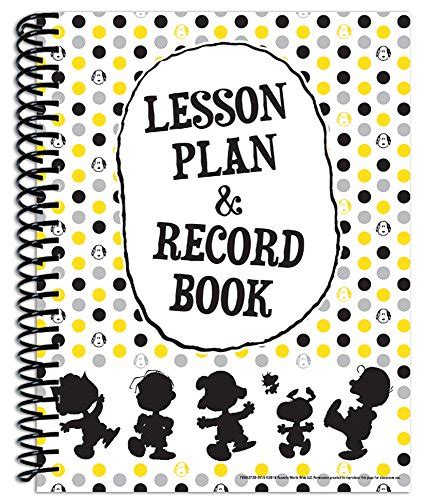October 17, 2021 | 4 mins read
Russian physiologist Ivan Pavlov believed there are some things that aren’t taught. He identified the application of classical conditioning by working with the idea that unconditioned stimulus triggers an unconditioned response.
Pavlov conducted several experiments to understand behavior, including the famous one with dogs and a bell. He rang a bell every time he fed the dogs and, after a while, found the bell acted as a stimulus associated with food. The dogs were classically conditioned and salivated whenever they heard the bell, expecting food from their master. There are many such classical or Pavlovian conditioning examples in daily life.
Below we’ll discuss classical conditioning examples in everyday life and the application of classical conditioning.
Classical or Pavlovian conditioning examples are a major influence when working with behaviorism. Behaviorism assumes that the environment shapes behavior and therefore interacting with the environment is crucial for learning to occur. Through examples of classical conditioning, we see that it’s a process of learning resulting from associations between a naturally occurring stimulus and an environmental stimulus. Using Pavlov’s dogs as examples of classical conditioning, we can determine the three phases of this conditioning process:
These three stages are constant. We see this in examples of classical conditioning in humans, be it workplace conditioning or classical conditioning examples in the classroom. Behaviorists found conditioning to be associated with different phenomena. Pavlovian conditioning examples show us changes in the pattern of response, its establishment as well as its disappearance. Classical conditioning happens unconsciously and can be used to pair a specific stimulus with an automatic conditioned response. All principles and phases of conditioning can be highlighted in various examples of classical conditioning in everyday life.
Examples of classical conditioning in humans explain many aspects of behavior. It has a crucial role in emotional responses, hunger and psychotherapy. Classical conditioning examples in the classroom show us how it’s applied in schools. Let’s look at the application of classical conditioning:
The application of classical conditioning extends to the world of advertising as well. Brands associate with popular and known personalities or use mascots for certain products. This reminds consumers of the product and stimulates them to consume more.
Let’s look at a few common examples of classical conditioning:
This is probably one of the most commonly seen examples of classical conditioning in day-to-day life. People may fear dogs, snakes or insects because of particular experiences or hearsay. People with such fears are classically conditioned to feel scared and anxious even if they think about these creatures
When in public, notice how a person immediately reaches for their pocket when they hear a ringtone similar to theirs. This is a case of stimulus generalization, where they’re conditioned to reach for their phones as soon as they hear a familiar sound
The behavior of students in the presence of a strict teacher is a telling classical conditioning example in the classroom. Even the most mischievous students are classically conditioned to be on their best behavior when they want to avoid severe repercussions.
People or other subjects may not respond like Pavlov’s dogs, but still, classical conditioning finds its applications in the real world. The process can be successfully used to cure phobia and anxiety, create a positive workplace atmosphere and as a smart advertising strategy.
Harappa’s Learning Expertly program will teach you how to work strategically through an upgrade of skills and knowledge. It’s a growth-oriented online course to show how to take a new approach to existing problems, acquire new knowledge and leave behind methods and ideas that hold us back. A course like this can help improve constantly and put you on the path to become a self-motivated, agile learner. Think creatively, avoid comfort zones and link curiosity with learning.
Explore Harappa Diaries to learn more about topics such as Overview of B.F. Skinner Theory, Operant Conditioning Examples In Everyday Life, Types of Conditioning Theory and Four Stages of Kolb Learning Cycle to upgrade your knowledge and skills.
Stay ahead at work with smart stories, videos and podcasts delivered straight to your inbox.
 Doggie Stylz Set Of 2 Reflective Therapy Dog In Training Removable Patches Wit
Doggie Stylz Set Of 2 Reflective Therapy Dog In Training Removable Patches Wit
 6 Pcs Service Dog In Trainingworkingstress Amp Anxiety Response Embroidere
6 Pcs Service Dog In Trainingworkingstress Amp Anxiety Response Embroidere
 Service Dog In Training Patch With Hook Back And Reflective Lettering For Servic
Service Dog In Training Patch With Hook Back And Reflective Lettering For Servic
 Four Paws Wee Wee Pee Pads For Dogs And Puppies Training L Gigantic Xl St
Four Paws Wee Wee Pee Pads For Dogs And Puppies Training L Gigantic Xl St
 Pny 128gb Elite X Class 10 U3 V30 Microsdxc Flash Memory Card 100mbs
Pny 128gb Elite X Class 10 U3 V30 Microsdxc Flash Memory Card 100mbs
 Academy Of Beasts V Shifter Romance
Academy Of Beasts V Shifter Romance
 Beast Academy 5a Practice
Beast Academy 5a Practice
 32gb Class 10 Sdhc Flash Memory Card Standard Full Size Sd Card Ush I U
32gb Class 10 Sdhc Flash Memory Card Standard Full Size Sd Card Ush I U
 Go Power F 200 Class T 200 Amp Slow Blow Fuse Silver
Go Power F 200 Class T 200 Amp Slow Blow Fuse Silver
 Blue Sea Systems 5116 Fuse A3tclass T 200a
Blue Sea Systems 5116 Fuse A3tclass T 200a
 Eureka Peanuts Classic Characters Deco Kit 840227
Eureka Peanuts Classic Characters Deco Kit 840227
 Eureka Peanuts Geometric Back To School Classroom Supplies Record And Less
Eureka Peanuts Geometric Back To School Classroom Supplies Record And Less













